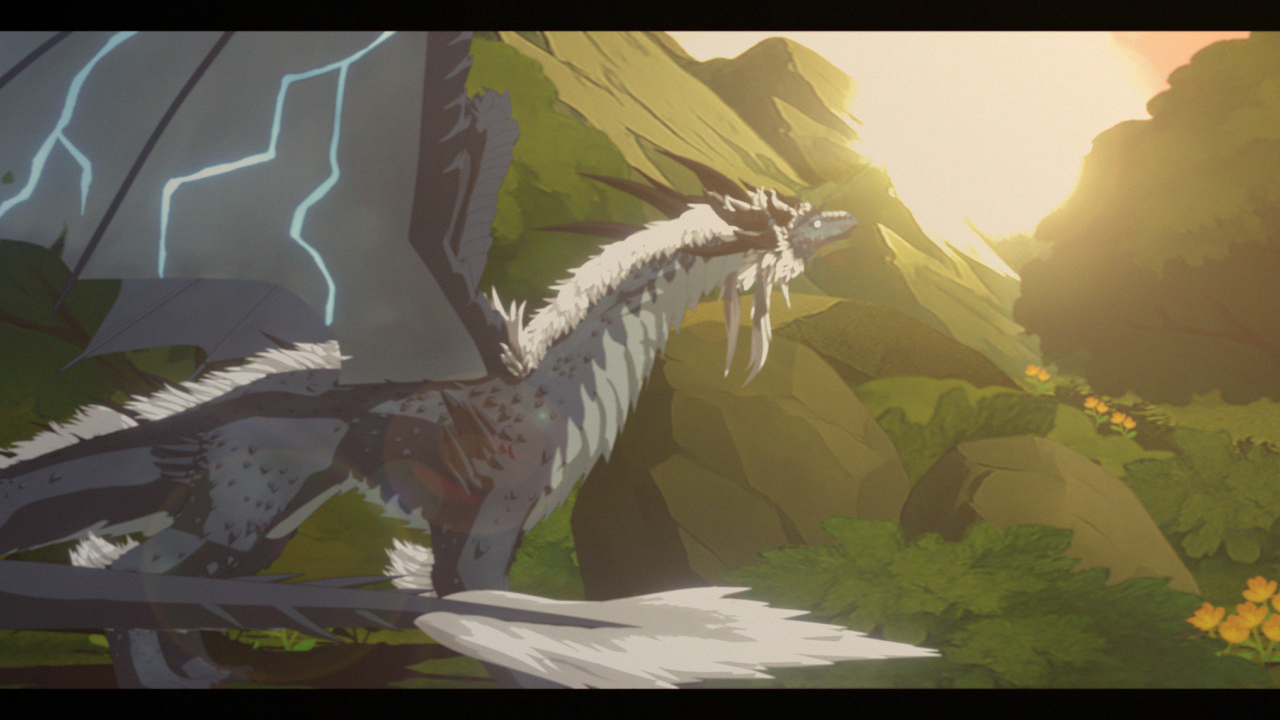

Creating animations and digital art requires powerful tools. Here are the main software applications I use to bring my Dragon Prince animations to life.

Blender
My primary animation software. I use Blender for animating Zubeia and creating my Dragon Prince animations. While I don't model or sculpt characters, Blender allows me to import my 2D cards and create dynamic animations with a paint-like style. Its powerful animation tools and rendering capabilities are essential to my workflow.
Key strengths: Free and open-source, powerful node-based materials system, excellent animation tools, and the Eevee real-time renderer that allows for quick iterations while maintaining high quality.
Learn more →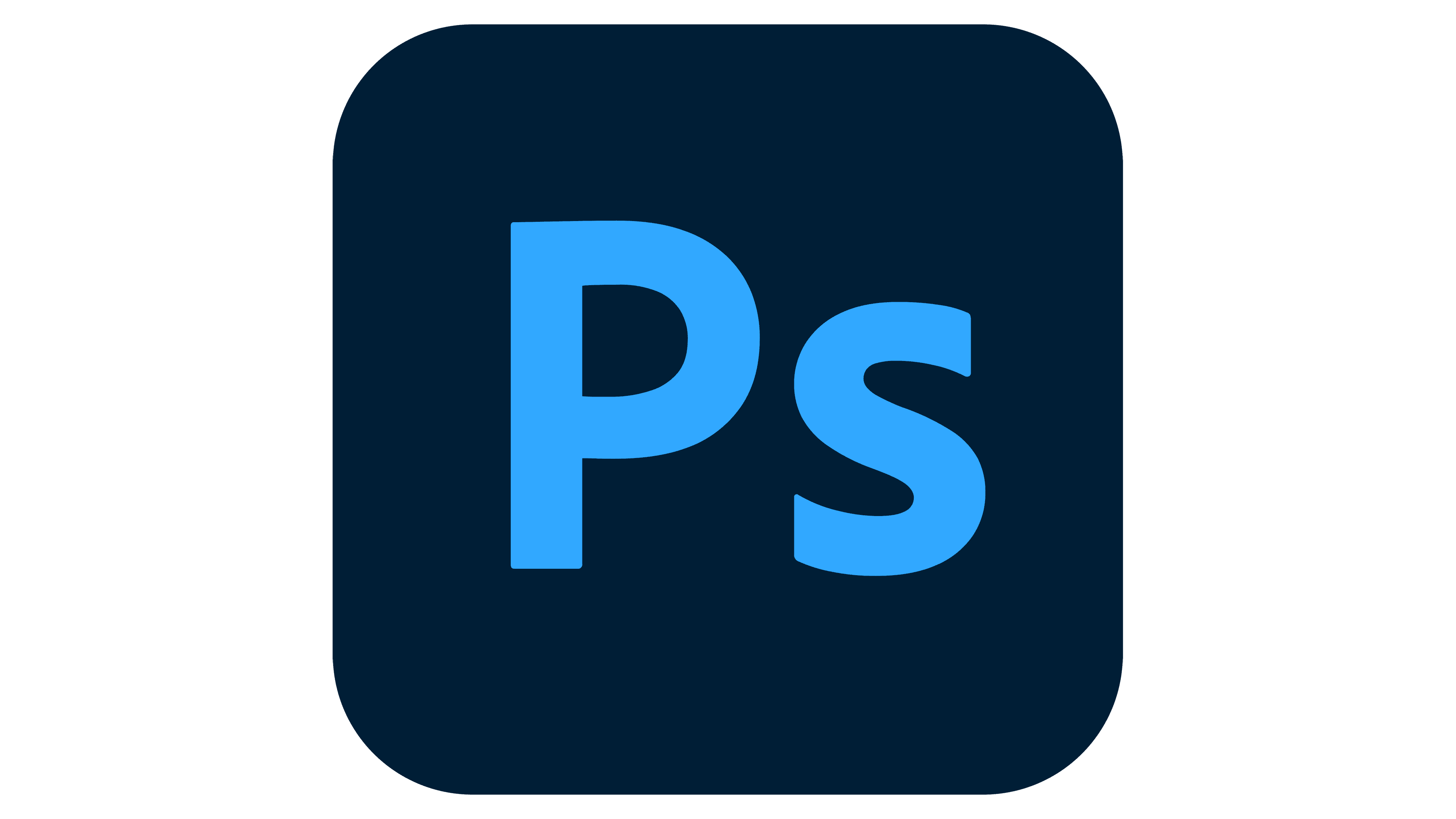
Adobe Photoshop
I use Photoshop to sketch and create 2D cards as layouts before importing them into Blender. This approach allows me to plan scenes and compositions in 2D before bringing them into the 3D environment. Photoshop's powerful brush tools and layer system are perfect for creating the stylized art that forms the foundation of my animations.
Key strengths: Industry-standard image editing, extensive brush customization, powerful layer management, and seamless integration with other Adobe products in my workflow.
Learn more →
Toon Boom Harmony
I use Harmony for visual edits and enhancing my animations. While not my primary animation tool, it offers specialized features that complement my Blender workflow. Harmony's vector-based tools are particularly useful for certain effects and refinements that give my animations a polished look.
Key strengths: Industry-standard 2D animation software, advanced rigging system, vector-based workflow that maintains quality at any resolution, and specialized tools for traditional animation techniques.
Learn more →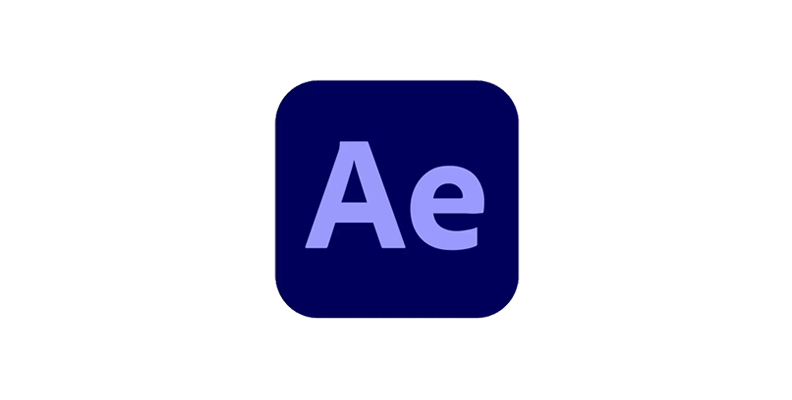
Adobe After Effects
After Effects is essential for visual edits and post-processing in my workflow. I use it to add special effects, enhance lighting, and create atmospheric elements like Zubeia's sky magic. Its compositing capabilities allow me to layer different elements and achieve the magical quality that brings my Dragon Prince animations to life.
Key strengths: Powerful motion graphics and visual effects, extensive plugin ecosystem, excellent keyframe animation, and the ability to create complex compositions with multiple layers and effects.
Learn more →
DaVinci Resolve
DaVinci Resolve is my professional-grade video editing software for complex projects. I use it for color grading, advanced visual effects, and final compositing of my Dragon Prince animations. Its node-based workflow gives me precise control over every aspect of my videos.
Key strengths: Industry-leading color grading tools, comprehensive all-in-one solution (editing, VFX, audio, color), node-based compositing for complex effects, and Fusion integration for advanced visual effects - all available in a powerful free version.
Learn more →
Wondershare Filmora
Filmora is my go-to software for quick edits and applying special filters to my Dragon Prince animations. Its user-friendly interface and extensive library of effects make it perfect for enhancing videos with magical elements and transitions without a steep learning curve.
Key strengths: Intuitive and easy-to-use interface, extensive library of pre-made effects and transitions, quick rendering times, and excellent for social media-ready content with built-in aspect ratio tools.
Learn more →
Adobe Audition
I use Adobe Audition specifically for editing my speech parts and modifying audio when needed. This professional audio workstation allows me to clean up voice recordings, add effects, and ensure the sound quality matches the visual excellence of my Dragon Prince animations.
Key strengths: Professional audio restoration tools, precise spectral editing for removing unwanted sounds, multitrack editing for complex audio compositions, and seamless integration with other Adobe Creative Cloud applications.
Learn more →PlayHT
I use PlayHT for voice cloning and generating high-quality voiceovers. This AI tool allows me to create consistent voice performances for my animations, particularly for Queen Zubeia's character. It helps maintain a professional sound quality across all my content.
Key strengths: High-quality voice synthesis, ability to clone voices with minimal samples, emotion control for expressive performances, and a wide variety of pre-made voices to choose from.
Learn more →Riffusion
Riffusion is my go-to AI tool for music generation. It helps me create custom background music and sound effects that match the mood and atmosphere of my Dragon Prince animations. The ability to generate unique audio that fits the magical world of Xadia enhances the immersive quality of my content.
Key strengths: Text-to-music generation, ability to create unique soundscapes based on descriptions, style transfer capabilities, and real-time music generation for quick iterations.
Learn more →My Animation Workflow
My typical workflow begins with sketching 2D cards as layouts in Photoshop. These cards serve as the foundation for my scenes and help me plan the composition and visual style. I then import these 2D cards into Blender, where I do the primary animation work for Zubeia and other elements in a paint-like style.
Unlike traditional 3D animation, I don't model or sculpt characters from scratch. Instead, I work with a hybrid approach that combines 2D art with 3D animation techniques. This gives my animations a unique look that blends the painterly quality of 2D art with the dynamic movement possibilities of 3D.
After the main animation is complete in Blender, I use Toon Boom Harmony and After Effects for visual edits, special effects, and final touches. For video editing and applying filters, I use DaVinci Resolve for complex projects and Filmora for quicker edits and special effects.
For audio, I use Adobe Audition to edit speech parts and modify audio when needed, ensuring professional sound quality. I then enhance the audio experience using AI tools like PlayHT for voice work and Riffusion for music. This multi-software approach allows me to leverage the strengths of each program to create animations that capture the magic and wonder of The Dragon Prince universe.
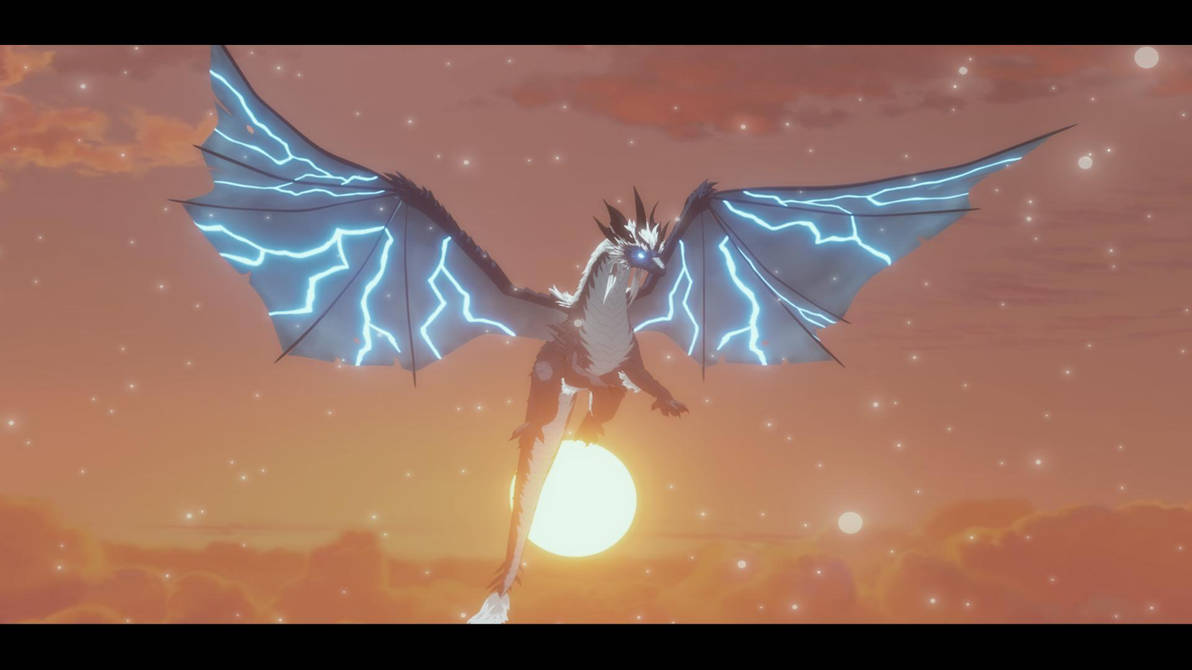
Take a peek into my creative process and see how I use these software tools to bring Zubeia and the world of Xadia to life. These screenshots show my actual workflow in action.
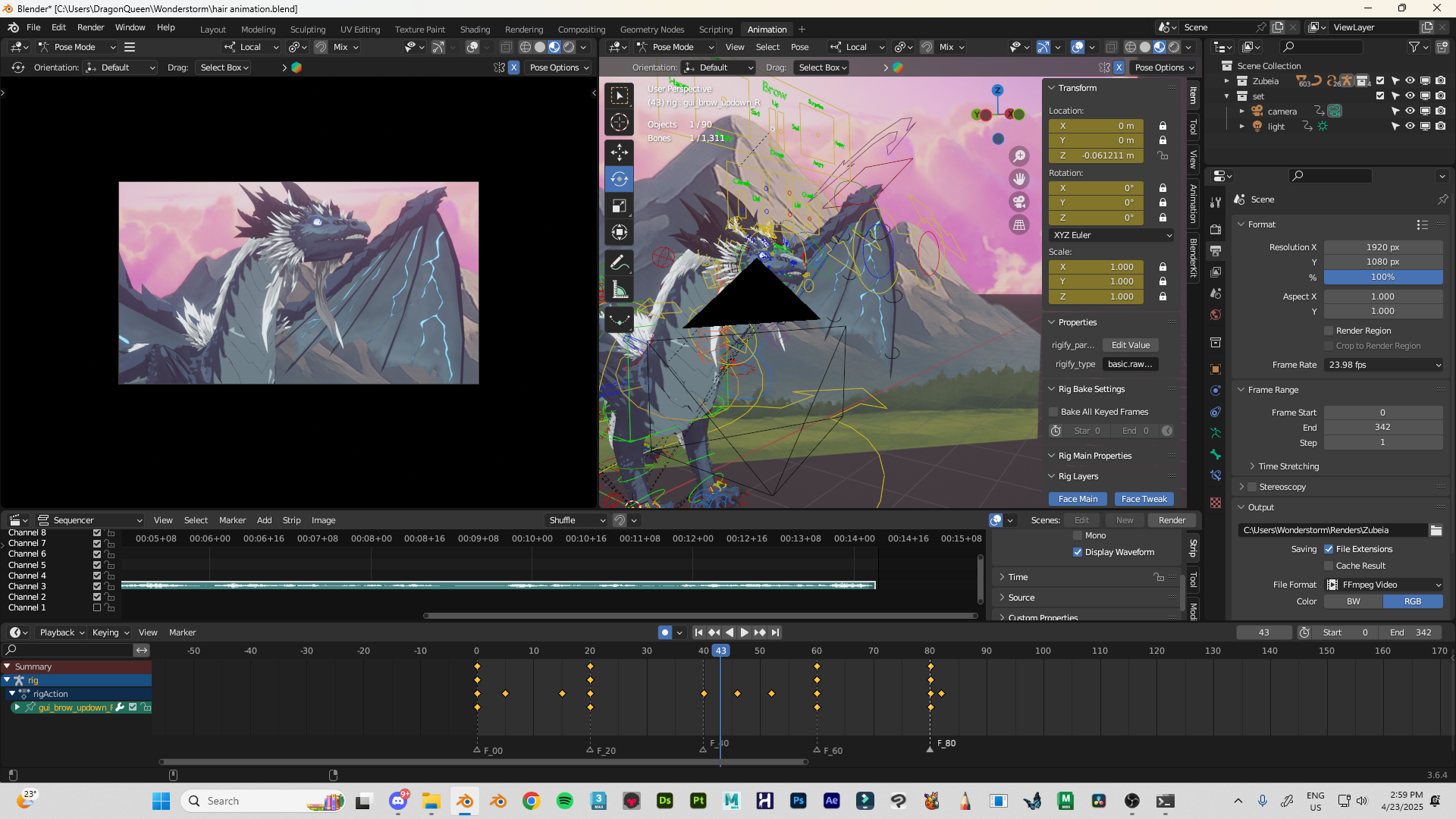
Blender Animation Process
Here you can see my Blender workspace where I'm animating Zubeia's wings and facial expressions. The colored lines represent animation paths and control points that allow me to create smooth, natural movements. I use a split-screen approach to see both my animation viewport and the timeline simultaneously.
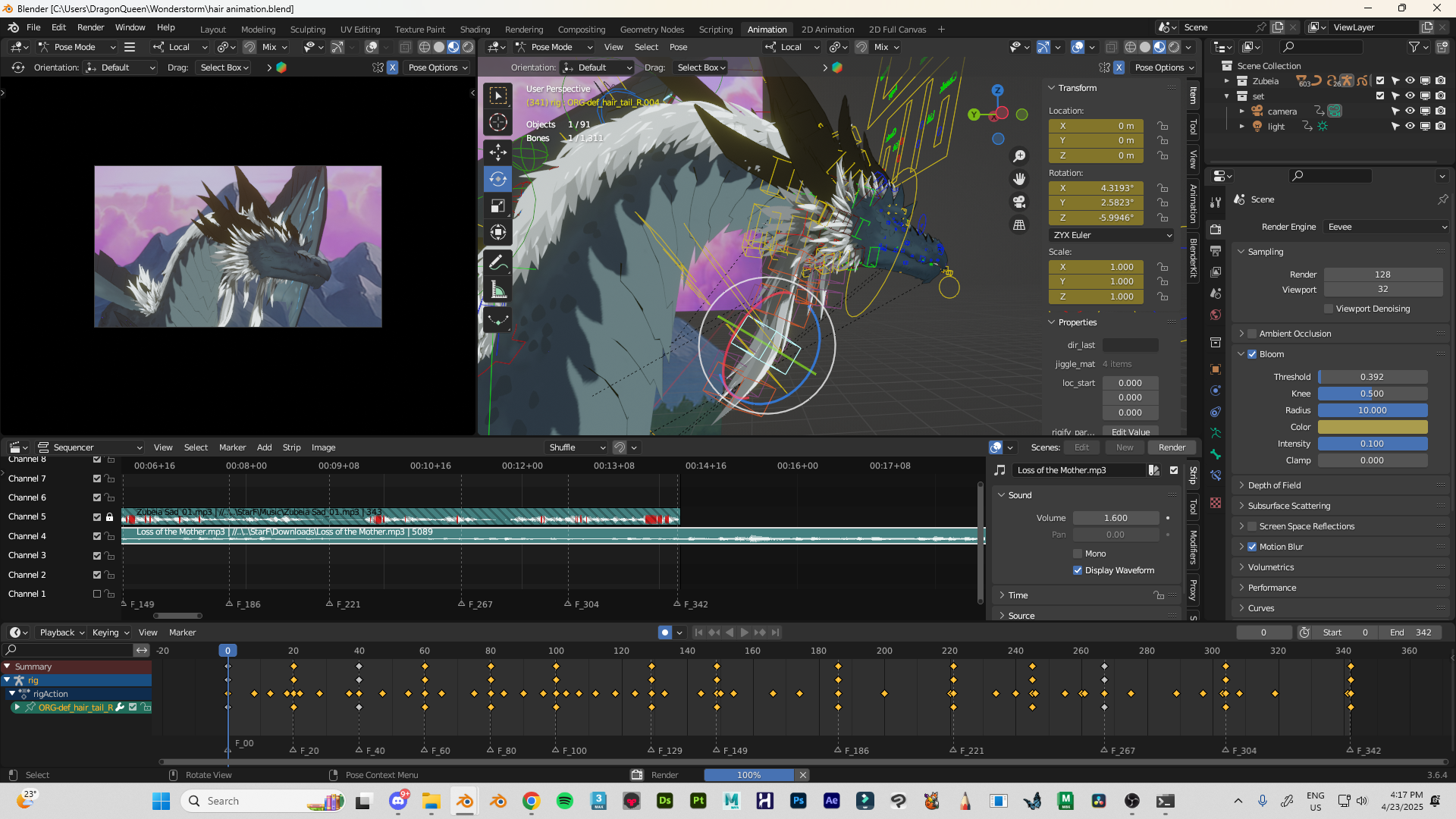
Audio Synchronization in Blender
This screenshot shows how I synchronize Zubeia's movements with audio. The waveform at the bottom represents the soundtrack, and I place keyframes (the yellow diamonds) at specific points to match the dragon's movements with the music. This creates a more immersive and emotionally resonant animation.
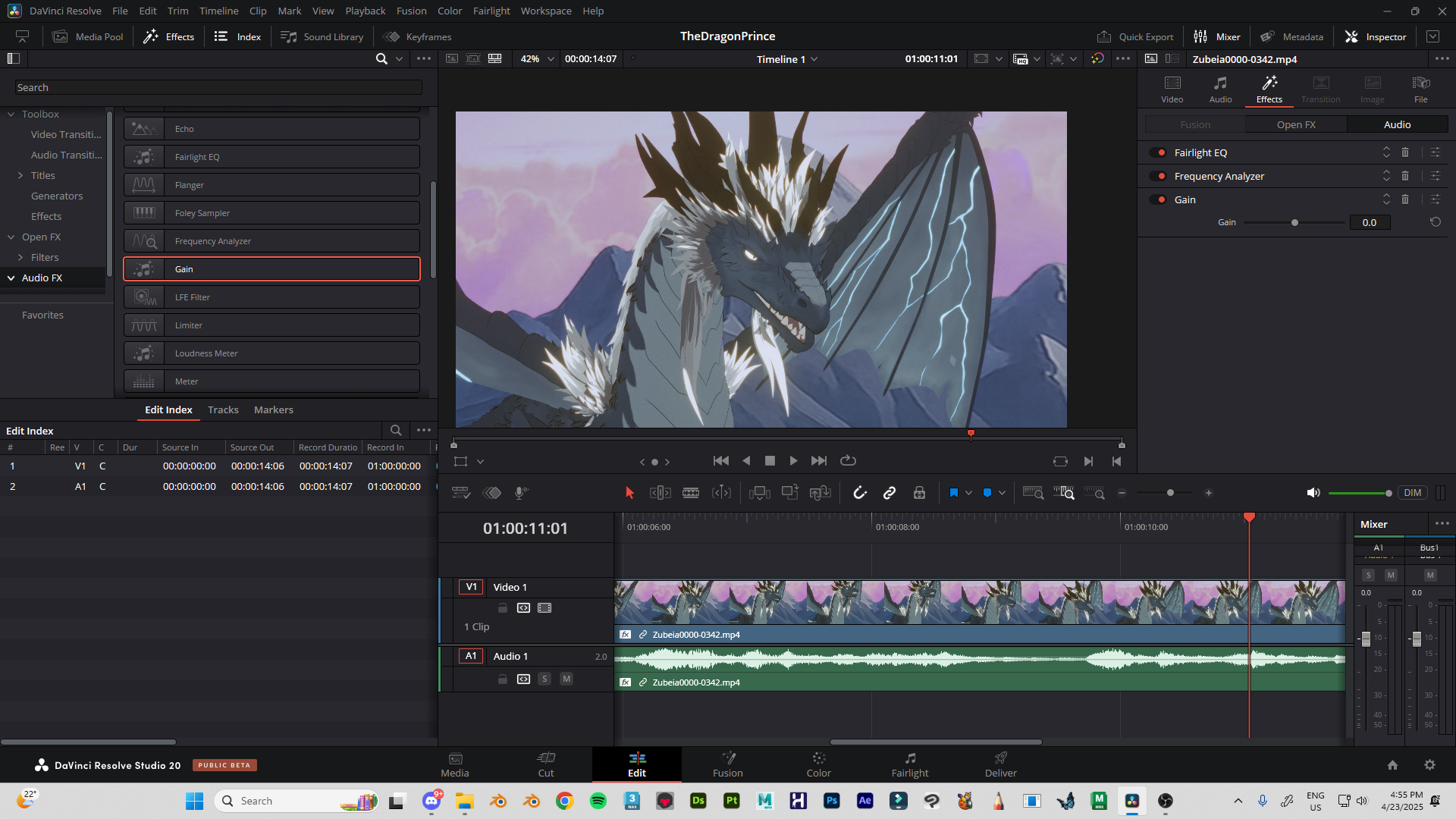
Color Grading in DaVinci Resolve
In DaVinci Resolve, I fine-tune the colors and lighting of my animations. This screenshot shows me enhancing the magical blue glow of Zubeia's wings and adjusting the overall color palette to create the mystical atmosphere of Xadia. The timeline at the bottom shows both video and audio tracks that I'm working with.

Final Rendered Scene
This is an example of a final rendered scene after going through my complete workflow. The lighting, colors, and atmospheric effects all come together to create a magical moment featuring Zubeia in the mountains of Xadia. This scene combines work from multiple software tools in my pipeline.